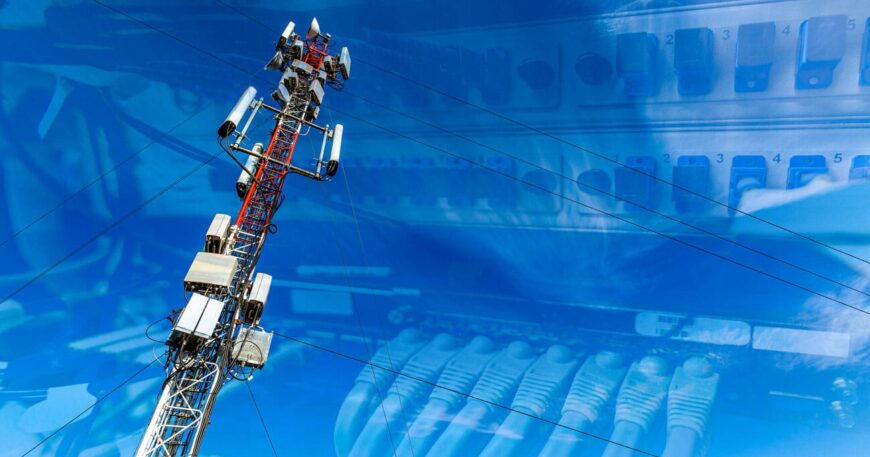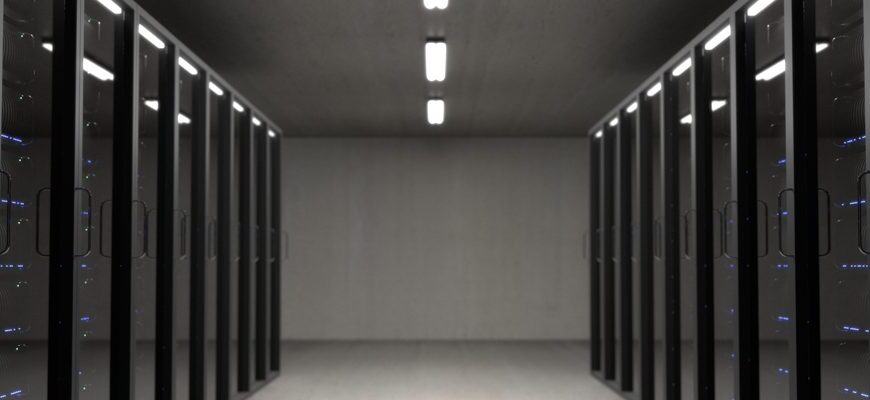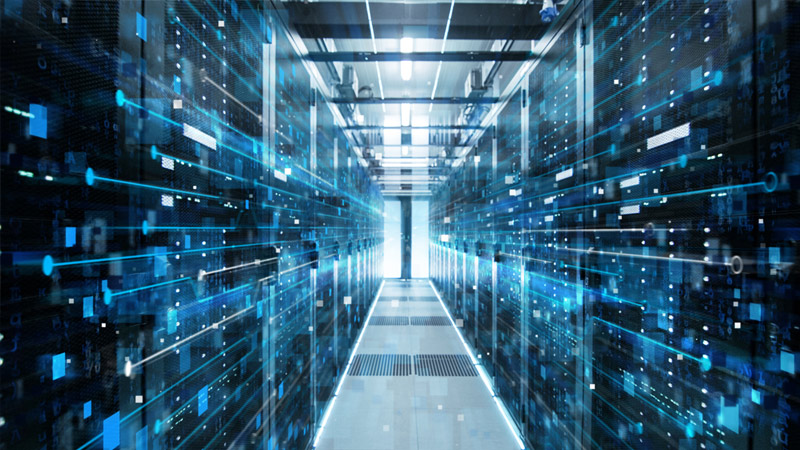- Home
- About us
- Products & Solutions
- Siddharsh Systems & Solutions Private Limited.
- Alliances
- Services
- Insight
- Contact us
- August 5, 2023
- By Animesh Singh
- Siddharsh
Group Legrand India Reconstructs Flood-Ravaged School in Barpeta, Assam
Group Legrand India, the leading provider of electrical and digital building infrastructure, as a part of their social initiative has rebuilt the flood-affected Kharballi L.P. School in Barpeta, Assam. This endeavor stands as a testament to Group Legrand India’s social commitment to supporting education and disaster relief, with the primary goal of restoring hope and providing a brighter future for the children who were affected by the devastating floods of 2022. Situated along the serene banks of the mighty Brahmaputra River near Barpeta, Assam, the Kharballi L.P. School once exuded tranquility and catered to 370 students from three villages. However, in 2022, the region faced unimaginable devastation when the floods completely washed away the old school, leaving the students without any means to continue their studies. The community’s plight was further compounded as countless homes were also destroyed. Working in close collaboration with the community and United Way India, Group Legrand India undertook the complete reconstruction of the school, reigniting hope among the students and instilling a sense of resilience. By employing local villagers for the construction, Group Legrand India provided employment opportunities and fostered a strong sense of community involvement. The newly reconstructed school now stands as a symbol of hope and resilience. The school’s state-of-the-art facilities and resources ensures a conducive learning environment, nurturing each child’s potential. The aim is to empower the students of Barpeta, Assam, enabling them to excel in their academic journey and realize their dreams. Ms. Mafida Khatoon, Head Teacher of Kharballi L.P. School, shared her experience: “Education is of utmost importance for our community. This school serves three villages on this island, and after the floods destroyed our old school, we came together and built a temporary shelter for our children to continue their studies. The support from Group Legrand India in building the new school has been a tremendous relief. Since the construction of the new building began, there has been a significant increase in student enrollment. The improved infrastructure has attracted more children, and we are grateful for the support we have received.” Tony Berland, CEO & MD of Group Legrand India, expressed his enthusiasm and pride in being a part of this meaningful project, saying, “Education is one of the key focus areas in our social initiatives, and we are delighted and filled with pride to have built this new school for these children. We firmly believe that every child deserves access to education and a safe environment to study. Through this initiative, we are not only improving the lives of the students but also creating a safe and nurturing learning environment, paving the way for a better tomorrow.” The reconstruction of Kharballi L.P. School in Barpeta, Assam, by Group Legrand India, serves as a testament to their purpose of improving lives. By providing a solid foundation for education, they have empowered these children to unlock their true potential and become catalysts for the development of their community.
- November 12, 2021
- By Animesh Singh
- Siddharsh
How to cut your way through the video conferencing jungle
Every meeting space needs to be prepared for high quality video communication as the world of work continues to evolve. But with the market flooded with products and organisations having their own usage and room requirements, it can be a bit of a jungle to find a way through! So we’ve created an interactive Room Type Guide to help match every room type with a suitable solution. In addition we’ve also produced a special video which highlights the new tool and also lots of other helpful information as offices begin opening back up. Watch us discuss how you can cut through the conferencing jungle: It was great fun being thrust into the video spotlight with my colleague Jörgen Rönnqvist. You could say it was a ‘jungle adventure’ as we spent around 15 minutes providing lots of tips and advice around the latest market insights, hybrid working trends and product innovations. Jörgen conducted a guided tour of the room guide to show different room dynamics and how easy it is to set up equipment. You can view the guide for yourself here. We also showcased how an educational organisation in Sweden has adopted hybrid teaching – and highlighted how Konftel has achieved a new industry accolade following Climate Neutral certification which was an industry first. In meetings not everyone will be physically present in the future. Easy to use, high quality video services will be everywhere and anywhere. Flexible solutions that support many different collaboration platforms will be crucial too to maximize the user experience. The use of video meeting rooms will continue to increase and change. This puts pressure on organisations to be ready. The time to act is now.
- November 12, 2021
- By Animesh Singh
- Siddharsh
Saving Energy with Fiber Optic Networks?
When it comes to protecting the atmosphere, FTTH is a good choice. This is because modern broadband provision with fiber optic networks requires much less energy in comparison with other technologies. The carbon footprint speaks for fiber optics. Is that a good question? You will probably ask whether it is really important to examine the carbon footprint of broadband networks. You may be afraid that this is about the greenwashing of a major industry. Rumors are circulating that the Internet and data transmission are climate-damaging energy guzzlers. As a responsible manufacturer of network technology for broadband service, we have taken a close look at this issue. This is because R&M wants to help minimize CO2 emissions quickly and sustainably. We want to give our customers the best possible orientation when they invest in networks. Broadband networks are currently being expanded all over the world and many new, extended FO networks are being laid. R&M supports and supplies numerous large-scale projects. That’s why the carbon footprint issue definitely plays an important role for us. Current studies and a few facts provide answers. To the facts Broadband networks require electrical energy. Data does not come into our homes from the cloud under its own steam. Access networks account for 70 % to 80 % of the power consumption in this sector. There are quite a few electrical systems working around the clock between the central office of the network operator and the subscriber. These include routers, switches, and transceivers. All electronic equipment ultimately contributes to the emission of greenhouse gases and must therefore be geared towards energy efficiency. Telecommunications services today already consume two to three percent of the energy generated worldwide. Data traffic is increasing, for example, through video streaming, online gaming, and teleworking. Data transmission can account for up to 80 % of the power consumption of video streaming. People have fun watching YouTube videos or Netflix movies. But it can’t be done without electricity. The energy efficiency of the various transmission technologies and media (fiber optic, copper, cellular phone networks) differs considerably. There is a big difference between transmitting light signals via fiber optics, transmitting electrical signals via copper cable, or high-frequency signals via an antenna. In terms of data transmission, 1 kg of glass is as powerful as 1000 kg of copper. Based on energy consumption per bit rate, copper-based broadband networks (VDSL2 vectoring, super vectoring) consume up to seventeen times more electricity than full-fiber networks. This is according to a report from the German broadband association BREKO from January 2021. The industry consultants at WIK Consult have calculated that telecom companies can save 60 % of energy costs by switching off the copper networks. One result of the German research project Green Cloud Computing in September 2020 confirms: «CO2 emissions are at their lowest when HD video is streamed to the home via a fiber optic connection». Each hour of video streaming produces two grams of CO2. The value refers to the effectiveness of the data transmission and the data center where the video is stored. In the case of copper cables (VDSL transmission), the figure is four grams and for 5G radio five grams of CO2 per hour. Clear result From R&M’s point of view, the situation is clear: When it comes to protecting the atmosphere, Fiber to the Home is a good choice. Anyone who opts for fiber optic networks is opting for the lowest possible power consumption in data transmission and thus the lowest possible CO2 emissions. Data traffic does not work entirely without electricity. But we can all opt for devices that are as energy-efficient as possible and have a climate-friendly power supply. In addition, the BREKO study adds the following: Fiber optic networks are more reliable than copper-based alternatives with fewer service interruptions, fewer failures, and lower maintenance costs. This also saves energy. One more thing Fiber optics are, in a way, sustainable by nature. They are made of silicate, which is available in virtually unlimited quantities. The raw material can be extracted and recycled at a reasonable cost. Optical fibers are light and thin. This means they can be transported with minimal effort. R&M also supports network operators with solutions that ensure sustainability and high efficiency right from the planning and construction phase. I would like to invite you to engage in an in-depth debate on sustainability. Let’s swap ideas on how to constantly improve the carbon footprint of the telecommunications and network industry. Write your comment at the bottom of the page.
- November 12, 2021
- By Animesh Singh
- Siddharsh
Worries about Artificial Intelligence
Artificial intelligence learns faster than anybody had ever imagined and it accesses massive amounts of unprotected data. Dr. Lars Jaeger reveals his thoughts on the subject. Mega Progress in Just a Few Hours Artificial intelligence (AI) is making surprisingly fast progress. So what has made this technology suddenly become so powerful? And what does that ultimately mean for us? R&M guest author Dr. Lars Jaeger, a well-known scientist, author and entrepreneur takes a look at these questions. Computers learn using patterns The secret behind the fast progress of AI is what is referred to as deep learning: an architecture of artificial neurons and their interconnections inspired by the human brain. These networks are trained on massive quantities of labeled data. Then, they use what they have learned, i.e. how they have chosen their many different parameters, based on the learning data, to detect subtle patterns in other mounds of data. This data is available online, e.g. data on a person’s behavior, contacts, and interests. Internet companies such as Google, Facebook, Microsoft, Baidu, Tencent, and Alibaba collect this data and feed it to their AI machines. AlphaGo shows how it’s done Google’s AlphaGo demonstrated just how quickly AI can learn. Only 18 months after AlphaGo’s spectacular victory over the best human Go, player, Google had created a new version of a Go-playing artificial intelligence. AlphaGo Zero did not need to be fed with past games anymore. After just three days and 4.9 million games, the artificial genius had reached a capability in the Go game that enabled it to beat its predecessor 100 games to zero in 100 games. And AlphaGo Zero had similar success in chess. No more limits An AI such as AlphaGo Zero is so powerful because it is “no longer constrained by the limits of human knowledge,” says one of the creators of AlphaGo and AlphaGo Zero, Demis Hassabis. “That is certainly a statement that provides some food for thought,” warns Lars Jaeger. Where is the protection? Leading scientists and critical entrepreneurs claim that AI can be as dangerous to humans as nuclear weapons. Experts are begging governments to provide a framework of laws and regulations. This is based on their concern that policymakers oversleep technological developments, do not take them seriously or simply do not understand them at all. Dr. Lars Jaeger also warns of the consequences of using AI. He expects an active shaping of the technology by society as well as democratic legitimization. His critical conclusion: “Intervention at the state level has only ever taken place when the technology was already ‘out there’ and its dangers had become obvious. In the future, that will no longer be enough! Surrendering such an important playing field as AI to the American capitalists or Chinese communists could prove fatal.” Good AI requires good connectivity! Without fail-safe, clean connectivity, AI will not work. With its solutions, R&M is, on the one hand, providing the basis for artificial intelligence to do their job reliably and without interference, but, on the other, would like to call for responsible dealings with this new technology. Companies should use the new possibilities carefully to market their products successfully, but should never lose sight of the overall ethical picture and should sensitize their stakeholders accordingly. With his commitment and dedication, scientist and academic Lars Jaeger is making a valuable contribution to sensitizing society to the importance of reliable dealings with modern technologies. His latest book «Braving more future – how we all benefit from progress» was published in the summer of 2019, initially in German
- November 12, 2021
- By Animesh Singh
- Siddharsh
5G Services Need Time, Cabling and Data Centers
As one of the first countries in Europe, Switzerland auctioned licenses for 5G services in February 2019. The market is raring to go. But the rollout needs time. Data traffic up to 100 times faster 5G technology facilitates mobile Internet connections up to 100 times faster than the current standard 4G. The transmission capacity increases by a factor of 1000. The latency is under 1 millisecond per ping. The 5G network – to its full extent – will be able to link 100 billion devices at the same time. Electricity consumption will drop by up to 90 % per mobile service. This means it is an attractive technology that will open up numerous new options. 5G can support digital transformation and drive it forward. The technical advantages play just as much a role for the security- and time-critical communication between vehicles and manufacturing plants as for smart cities and telemedical services. Consequently, the whole of the telecommunications world is currently focusing on 5G. Virtually every day, network operators, test users, and chip manufacturers are reporting on the latest developments. Numerous pilot projects show diverse application possibilities. Rollout takes time The license awarding and pilot schemes should not gloss over the fact that patience is a major requirement. It will take a few years to get devices, applications, service and business models in place. In October 2018, market researchers from BMI Research reported that there are currently only a few applications that specifically need 5G. The mass market with affordable devices has yet to be developed. Suitable smartphones are due to be launched in 2019. The nationwide rollout presents network operators with a number of challenges. They need approval for lots of new antenna sites. 5G needs more FO networks A further challenge is being added to the mix. In the future, it will no longer be sufficient to connect the base stations with each other using radio links. The antennas have to be integrated into FO networks. Fiber to the Antenna (FTTA) is the name of the investment program that now has to be mastered. Apart from that, the antennas have to be connected with local or regional edge data centers. This is the only way the expected quantities of data will be able to be transported and processed in real-time. Depending on the location, one and a half to three times as many base stations and two to three times more optical fibers than is the case to date will be required. FTTA requires innovative cabling solutions. R&M is working on the development of such solutions and is helping mobile communication suppliers to create 5G infrastructures.
- November 12, 2021
- By Animesh Singh
- Siddharsh
5G: Planning Fiber Optics for Macro Cells
It sounds easy: Screw a few MIMO antennas to the masts. Installing active equipment, retrofitting radio station baseband units, or, in the case of a centralized RAN structure, consolidating them in the central office, loading new software – the mobile infrastructure is already up to the 5G standard. But there are still a few tasks to be solved before the necessary fiber optic infrastructures (backbone) for 5G are also available to ensure this will actually work. A different 5G perspective: Layer 1 Without close-meshed FO infrastructures on the ground, there are no sophisticated 5G services that can be broadcast via the antennas. The new, economically attractive applications and business cases of the 5G era, particularly in the business customer segment, require the real-time transport of huge amounts of data. From the core network to the radio heads, continuous and closely meshed fiber optic Layer 1 infrastructure must be available to ensure this. Easier said than done. Fiber to the Antenna (FTTA) is posing a challenge to the various stakeholders. Manufacturers of active devices and antenna systems, tower companies, neutral hosts, mobile and private network operators, service providers, cities and their communication service providers, municipal utilities, and land and building owners – they all have to deal with the topic of cabling. Quickly upgrading macro cells This is about the additional Layer 1 capacity and connectivity for macro cells. It is a matter of rapidly upgrading existing cellular phone networks and masts to 5G. The Layer 1 hurdles for small cells, pico cells, private networks, and for 5G in city centers and buildings, etc. also need to be examined more closely. The task is to consolidate and centralize cabling infrastructures for macro cells as well as provide additional capacities in terms of fiber optics and power supply. A colorful mix of existing fiber optic cabling for macro cells has to be integrated into new 5G infrastructures. This 5G upgrade inevitably leads to complex cabling infrastructures in the access, midhaul and fronthaul segments. Naturally, cabling and connectivity have to be absolutely reliable for the demanding 5G applications to work. The focus is on flawless components, simple and therefore virtually error-free installation, interruption-free maintenance, and regular optimization options at every network level. Planning every meter precisely The cabling path from central offices through building and outdoor cabling to the boxes, terminals, and remote radio units can be challenging. Sometimes it’s just a few hundred meters, sometimes it’s miles. Sometimes vertical, sometimes horizontal cabling paths. Sometimes indoor, outdoor, or underground cabling for radio masts, or wall or distributed roof structures on buildings of varying heights. In addition to existing power, copper, and fiber optic cables, new, additional cable bundles with larger diameters, more copper, and more fiber optic capacity usually have to be installed. And that means opening and securely closing splice closures, shafts, distribution cabinets, riser zones, cable ducts, and boxes, or expanding them or replacing them with new ones. Depending on the location, additional groundwork, room rental, additional distribution cabinets, container solutions, or wall cutouts and roof openings may be required. Every meter of fiber optic cabling and the associated power supply for new active equipment on the 5G roadmap has to be planned precisely. A further hurdle, for example, maybe the space available for these installations. While network operators want to make the most of 5G frequencies, it is not always possible to create more space for the equipment or build additional masts at every macro-cell location. The plot area or space on a roof is usually limited, the load capacity of the existing masts is often exhausted and the construction of additional masts requires lengthy approval procedures. In other words, there is no «one solution fits all» approach. 5G cabling has to be planned individually to suit the location and operator. Defining architectures Other tasks: defining network architecture, technology, and service models. From the perspective of cabling, for example, the question to be answered is: Who is doing the building? Network operators, tower companies, and neutral hosts for fiber backbone networks have different priorities. Will it be a single or multi-operator location? Can market participants share fiber optic networks and central offices for several cell sites in a competitive manner? Can approval procedures be simplified and construction costs thus minimized? Is it to be a separate, direct point-to-point fiber connection or can an existing fiber optic route from another FTTx network be used in the context of fixed-mobile convergence? How can the effort involved in cabling be minimized and standardized in each case? How and where should remote radio heads, active antenna systems, associated baseband units, distributor boxes, power cabling, and other equipment be positioned? Which protocols and multiplex processes run on the optical networks and which connectivity do they require or are they already using? Does the active equipment come from a single manufacturer? Or does the relevant network operator employ a multi-vendor policy for 5G Core and 5G Radio shares because it is technically sensible, more cost-effective, or historically given? It also needs to be clarified whether existing and new products are interoperable, which interfaces, connectivity, and cabling solutions are used and whether the designs harmonize. Looking underground The question of whether existing FO networks could be used is very complex. Possible resources: Telephone, CATV, FTTH networks Campus and building networks Fiber optics from local, supra-regional utilities or from rail network operators and their communication infrastructure This topic will be of major interest to network operators and investors as they can save money and time if they do not have to develop and build new FO routes themselves. However, evaluating, planning, and implementing suitable locations for branching off existing networks requires time and expertise as well as suitable connecting technologies and system solutions. Cities and landowners often don’t know exactly what’s in the ground or what’s inside the switch box built years ago. There are numerous old channels, shafts, and distribution cabinets that would have space for additional and new power and fiber
- April 19, 2021
- By Animesh Singh
- Siddharsh
The VAR guide: 6 tips on how to design a data centre
The growth in global data traffic, as well as the demand for high computing power and storage, are primary factors driving the increasing demand for data centres, across organizations. In fact, as per a new report by Technavio, the worldwide data centre market size is set to grow by USD 304.87 billion during 2020-2024, rising at a CAGR of over 17%. Clearly, data centres are in high demand across the globe. Additionally, emerging trends such as IoT, cloud adoption etc. are dictating the adaptation of these data centres into the next generation. So, how can you, as a value-added reseller, optimize and design a data centre structure for your clients? Here our experts have put together the best practices to keep in mind when you design a data centre – Plan for the future – Begin by understanding the client requirements – their short term as well as long term goals. The fast pace of today’s technologies means that the demands of a data centre will only increase with time. Hence, data centres must be able to respond to these changing requirements quickly and easily support increased workloads. Plan for the future by answering the following questions – Location – The right location can often determine the performance of your facility. Ensure that your prospective site has a large space that can house racks and larger components such as generators and cooling towers. The infrastructure should be optimized for space and resource allocation, instead of just filling up space with equipment. Floor space – How much space is needed to house the data centre and its infrastructure? What are the future requirements you foresee? While it is not always feasible to allocate floor space in advance, you can make the most of the available space by using flexible and scalable cabinets and racks. They should have adjustable rails, airflow management options, cable support and protection. The benefit here is that these will accommodate the growing requirements from the centre as and when required, etc. Develop performance and cooling strategy – Energy consumption, as you know, is one of the most critical variables for any organization, as data centres are significant consumers of energy. Overall, servers and data equipment make up over 55% of the total energy used, followed by the cooling equipment at 30%. One of the first things you should look at is what type of cooling will be required. Some of the options available are – Air cooling – Many companies use air conditioners or chillers to cool their server racks. While widely used, this is not one of the most efficient methods of cooling. Water cooling – An alternative to air cooling is using water-based cooling systems, which are compact, energy-efficient and, hence, cheaper to operate. Localized cooling – Another option is where a unit is set up for each row – allowing for more precise cooling based on needs of each equipment row. Moreover, you should also ensure a backup plan for your power and cooling requirements. Datacenter components do not respond well to fluctuations of temperature. When these lose power, they require total restarts, leading to downtimes, startup issues and loss of transit data. Usually, organizations make use of backup generators to make sure 100% uptime for their data centres. Manage airflow– Ensuring proper airflow through the data centre can contribute to lower energy costs and higher efficiencies. A good data centre airflow management plan is a great way to keep your facility at the right temperature. Develop an efficient airflow plan by leveraging the strategies below – Plan the main inlet for cool air and outlet of warm air. Set up hot and cold aisles by positioning server racks so that the front of one row faces toward the front of the next row. Install physical barriers between server racks for air containment. Deploy filler panels within each server row to feed chilled air directly to the equipment. Also, choosing the right server racks will help use your equipment properly and ensure ample space for the future. Many new data centres have rows of empty racks that help to facilitate proper airflow until they are filled. Optimize cabling – Improper cable management can be a contributing issue to datacenter downtime. Avoid this possibility by organizing and storing all wiring correctly. One way to manage cables is to label and colour code them to make them easier to track and maintain. Using horizontal or vertical cable managers to untangle and streamline is another method. Ensure security and support – On average, the impact cost of a data breach to an organization is over $150 million in 2020. Many data centres contain business-critical data, making them particularly vulnerable to cybercrime. To counteract this risk, implement strict security protocols for your clients, especially when dealing with cloud applications and on-site data storage. Additionally, ensure physical security measures such as restricted doors, biometric access and enclosed server racks. Automate and monitor – To maintain the performance of your client’s datacenter, it is important to have mechanisms in place that can monitor and report on power, cooling, and networking to inform management and help them plan for future capacity needs. Detailed planning and monitoring can help ensure that the data centre you design has proper airflow and that the equipment is operating at the right temperatures. Besides, it will also help keep costs low, reduce inefficiencies and eliminate wastage for your customers.
- April 19, 2021
- By Animesh Singh
- Siddharsh
Supply Chain Management
It is no news that the ever evolving nature of the technology universe is leading to its increased dynamicity. This has led to a change in the overall lifecycle of technology distribution. Gone are the days when a company was only an end-to-end distributor. Changing conventions and concepts have forced enterprises to adopt newer practices to better serve the value chain. Distribution, at its core was just seen to be a fulfillment component – if consumers had a need, distributors filled it. This was a binary transaction based on the need-delivery model. But today, the digitization of technology has forced distributors to reanalyze this model given the sophistication and adeptness of the services it offers. This has compelled business to shift from their traditional notion of being just distributors to being solution aggregators. When distributors assume the role of solution aggregators, they create solutions that are customized in nature and that help consumers stay relevant in the competitive market. As solution aggregators, Siddharsh makes use of its diverse vendor and product network to achieve this goal. Unlike plain distribution that requires just one to possess basic knowledge of the supply chain, solution aggregation requires acute knowledge of the market and the knowhow to garner elements, streamline complexities and provide the capabilities that amplify these adaptations to assure scalability. At Siddharsh, we relentlessly contrive a mix of products that ensure your success. Moving from outcomes to solutions, we are focused on creating new business models. Business challenges that you face as a result of sprightly technological advancements are overcome by our expertise in steering the accession, interaction, services and delivery. Our integration ability coupled with our industry knowledge and resources help us integrate solutions and foster collaboration between all members of the ecosystem. Our investments and expanded solutions in cloud, networking and security and mobility for IoT help to accelerate your success. To be a solution aggregator yourself, leverage our offerings – training materials and tools to stay ahead of the curve and sell more solutions, click here – SIDDHARSH RESELLER FORM.
- April 19, 2021
- By Animesh Singh
- Siddharsh
The increasing role of AI in the data center
As the world grapples to handle a tsunami of data, data centers are also evolving quickly. Rapid growth in the number of smart connected devices and a huge rise in consumption of data is placing enormous amount of pressure on the underlying data center infrastructure. Data centers have become so complex, that is no longer possible for only human beings to manage this rising complexity, without impacting performance and efficiency levels. A technology like AI can help immensely in helping organizations improve the efficiency of their data centers in a significant manner. Such has been the impact of AI on data centers, that last year, Gartner predicted that by 2020, more than 30 percent of data centers that fail to implement AI and Machine Learning will cease to be operationally and economically viable. Google highlighted one of the first instances of the possible potential of AI in the data center, when it published research that it used AI in the data center to improve the power efficiency of its data center. In a span of just 18 months, Google used its AI powered Google DeepMind system to bring about a 40% reduction in the amount of energy required for cooling, which is equivalent to a 15% reduction in overall PUE overheads. Since then, many firms have followed suit to explore the transformational potential of AI. Handling workloads efficiently: AI can help organizations automate workload management in the most efficient way. With the usage of AI and machine learning, patterns can be detected to learn from past data and distribute workloads across peak periods more efficiently. They can also be used to better optimize disk utilization, server capacity and network bandwidth. This was demonstrated last year by a team of MIT researchers. An AI-based system developed by MIT researchers automatically “learned” how to schedule data-processing operations across thousands of servers — a task traditionally reserved for imprecise, human-designed algorithms. MIT researchers said that by doing so, they could help today’s power-hungry data centers run far more efficiently. The researchers said that compared to the best hand-written scheduling algorithms, the researchers’ system completes jobs about 20 to 30 percent faster, and twice as fast during high-traffic times. Additionally, the system learns how to compact workloads efficiently to leave little waste. The results indicate that the system could enable data centers to handle the same workload at higher speeds, using fewer resources. Staffing: Hiring people with the right skill sets is a massive challenge in the digital era. Gartner, for instance, predicts that by 2020, 75% of organizations will experience visible business disruptions due to gaps in I&O skills (an increase from less than 20% in 2016). AI can play a big role in automating many of the tasks that human agents do today. Energy Efficiency: As seen from the example of Google, AI based systems can play a huge role in better optimizing heating and cooling systems, which in turn can help in reducing electricity costs.. AI can also be used to determine how organizations can best utilize resources, such as the most efficient time for performing certain type of tasks. AI can also be used to help in creating the design for a more efficient data center, and in detecting applications or servers that are rarely used. It can also be used to detect power hungry applications or servers, and recommend ways to move specific workloads to more efficient ones. Security: AI can be used with great impact in a security operations center in a data center. AI can complement current Security Incidents and Event Management (SIEM) systems, by analyzing incidents and inputs from multiple systems, and devising an appropriate incident response system. AI-based systems can improve the security operations centre monitoring and basic L1 jobs can be reduced. For example, when more than 20,000 events per second are logged, it becomes difficult for human beings to monitor these events. AI based systems can help in identifying the malicious traffic from the false positives and help data center administrators handle cyber security threats more efficiently. Proactive management of hardware: AI systems can help organizations in proactively managing the health of their IT infrastructure such as storage, servers or networking equipment. For example, by aggregating logs of different equipment, AI can unearth the root cause of failures and also proactively identify precursors of degradation of equipment. Anomalies, if any, can be reported to address the probable cause of failure, before the equipment fails.
- April 17, 2021
- By Animesh Singh
- Siddharsh
9 Reasons Why Siddharsh Supports Smart Buildings
Some infrastructure improvement ideas focus on national security matters, including safeguarding the power grid against hackers, while others increase the nation’s ability to communicate using today’s technology. It’s hard to believe that many Americans don’t have access to high-speed, futureproof broadband infrastructure. Whether you’re in a city, in a rural area or on tribal land, IT and internet connectivity are now considered a utility—just as vital as electricity—and essential to everything from learning and healthcare to manufacturing and shopping. Smart buildings fit in that category, too. The tools exist to integrate building technology systems for operational efficiency, occupant comfort and automated management based on real-time data. Even if their primary function isn’t to improve sustainability, smart buildings deliver energy and cost savings that come along with better control and integration. Network infrastructure reliability is the key to keeping building systems up and running. High-performance cabling and connectivity act as the nervous system to bring these capabilities to life, even in wireless environments. And providing these 24/7 connections is what Siddharsh is all about. In addition to the energy and cost savings, the excitement around smart buildings is centered on people and improving the human experience. Siddharsh is at the center of this transformation to a connected country—and a connected world. There are many benefits to the deployment of smart building technology, but here are several key ones to note: Better, more efficient building management that allows for safer, more comfortable environments. Automation for increased productivity, lower maintenance costs and optimized building performance over the long term. Easier, faster and more collaborative communication both internally and externally. Data capture and analytics for seamless, informed and cost-effective decision-making. This includes enhanced monitoring of occupancy levels, room status, air quality, etc., which are all even more important amid and beyond COVID-19. Simple deployment of next-gen technology down the road. More and better jobs. While some fear that automation will reduce the number of workers, automation and smart building technology may actually help create more jobs focused on high-value tasks. Improved human well-being by removing common environmental stressors (malfunctioning equipment, space that are too hot or cold, inadequate lighting, etc.) and providing customized, comfortable places to work. Better talent acquisition and retention, with employees making employment decisions based on the features and facilities a workplace has to offer. Improved energy efficiency, which lowers utility bills and operating expenses, conserves resources and makes it easier to keep pace with climate change initiatives.













